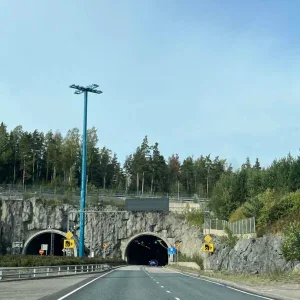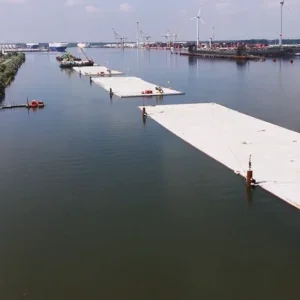The 11.7m diameter Herrenknecht mixshield TBM has broken through on the second tube of the 1.6km long twin-tube Weser Highway Tunnel in Germany. The event sees the second bore on a challenging project come in exactly on level after nine months of boring.
Contractor JV ARGE Wesertunnel consisting of Hochtief/Philipp Holzmann/Ludwig Freytag/Heinrich Hecker/Martin Oetken began tunnelling on the first bore at the end of 1999. The TBM completed the tube in November 2000 after a difficult drive through sand, clay, gravel and boulders. To prevent blowout the tunnel elevation was lowered by 3.5m and a 500m long x 75m wide granite carpet was placed along the river bed. On completion the machine was dismantled, taken back across the river and readied for relaunch. The second tube began in February 2001 and made good time through similar conditions. Both tubes are lined with 6+1 segments bringing the i.d. to 11.3m. Using a VMT guidance system the millimetre perfect breakthrough has brought the project in well ahead of schedule.
The complete $181M Weser Tunnel project is due for completion by the end of 2003. Situated 50km north of Bremen the four lane tunnel will link the B212 national road with the A27 highway, improving access to Germany’s lower Wesser Region.
The Herrenknecht is now scheduled for the construction of the 780m long twin tubes of the 1km long Herren road tunnel under the River Trave in Lübeck, Germany.
JV, Herrentunnel Lübeck has been chosen for the first BOT project in Germany and told T&TI that it envisages start of construction of the first 11.5m diameter bore in August next year.
The tunnel will replace the Bascule Bridge over the river which is no longer fully functional.
The $136M project is being financed by the German government and private investors. After 30 years’ operation, the tunnel will be handed over to Lübeck city.







